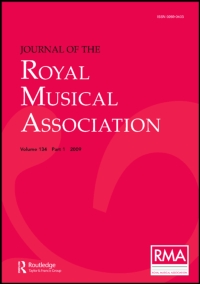No CrossRef data available.
Article contents
Rhythm in National Music
Published online by Cambridge University Press: 01 January 2020
Extract
Modern music is derived from two sources—the music of the church, and the music of the people. The one was the result of rules and principles carefully laid down and strictly adhered to, the other was the instinctive expression of emotion and fancy; the one was the work of the highly-trained professional musician, the other came into existence we know not how; the one depended for its effect on elaborate contrapuntal devices, the other on its rhythmical melody. The music of the Church was slowly built up to the state of severe perfection we find in Palestrina's work; the music of the people attained truth of expression, as it were, intuitively. We are able to trace the growth of what may be called scientific music from Dufay to Bach. We have no such knowledge of the music of the troubadours, minnesingers, jongleurs, gleemen and bards, and we are frequently in doubt whether the specimens we possess are genuine transcriptions or whether they have not been altered to suit the ideas of the musician who wrote them down. And yet it may be doubted if we owe more to the music of science than to the songs of the people. Rhythm is the very essence of the art, and it is to the folk-music that we are indebted for rhythm and all that results from it. Without this element we could never have arrived at our modern form so obviously founded on balance and proportion. Without it our scale system might never have been attained, for it is not difficult to see how the introduction of cadences must have influenced tonality. Indeed, we actually find on comparing the two kinds of ancient music that the folk-music much more closely resembles our present system. Again, it is to the folk-songs that we must turn when we seek for characteristic national music. It is no doubt true that there is a marked distinction between the Church music of different countries, but this distinction arises more from the diversity of Church services in different countries than from a variety of musical idiom, whereas in the case of folk-music the musical idiom unmistakably varies in different nationalities, making it perfectly easy even for the casual observer to distinguish, for example, between Hungarian, French, and English music.
- Type
- Research Article
- Information
- Copyright
- Copyright © Royal Musical Association, 1904


